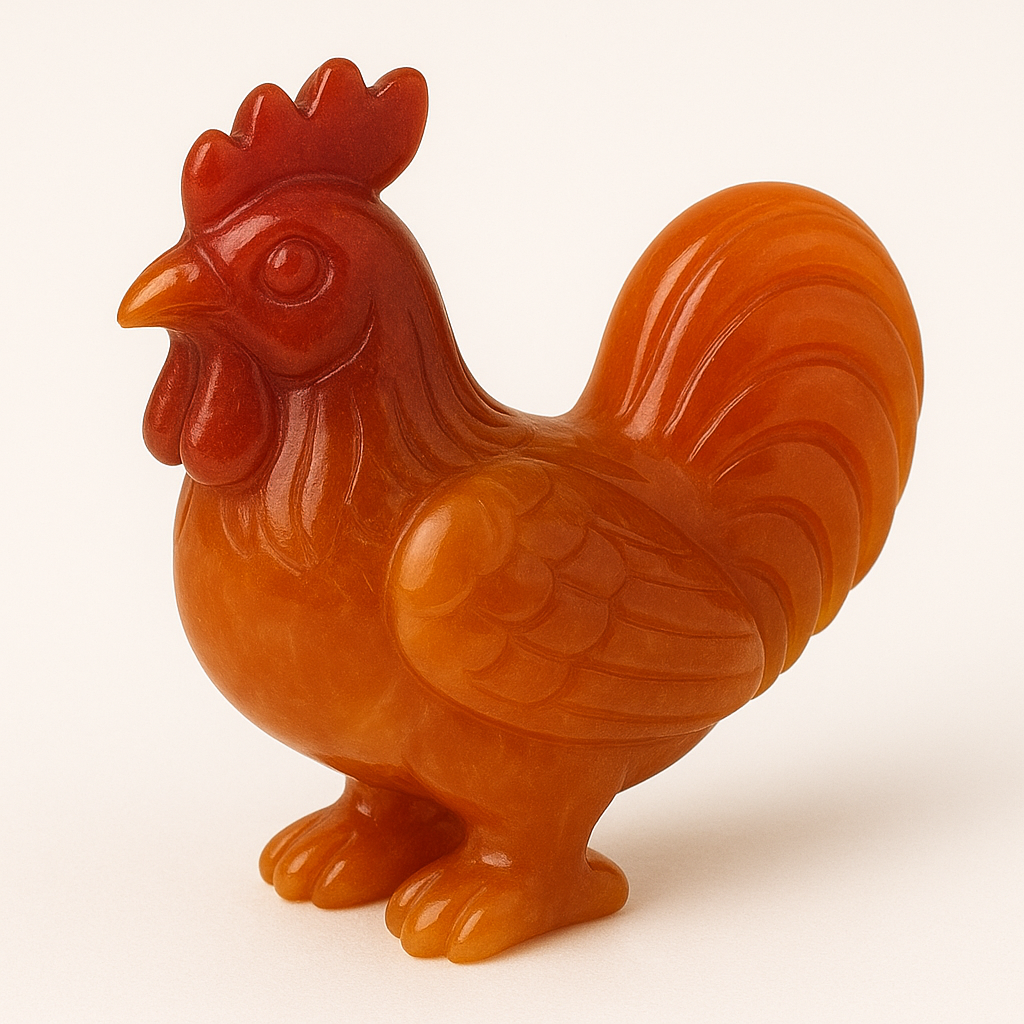
The Symbolism of Chickens
Share
With feet upon the Earth and eyes alert to the sky, the chicken embodies awareness within simplicity, rhythm within repetition, and life continually renewing itself through humble forms. It is not a being of spectacle or secrecy, but of daily devotion to the cycle of nourishment, protection, and regeneration. Where some creatures symbolize transcendence or fierce power, the chicken stands as an emblem of grounded vitality, of care in the ordinary, and of the sacredness of tending to life at its roots.
To contemplate the chicken is to reawaken to the dignity of routine, the value of attentiveness, and the ancient pulse of fertility, warmth, and communal presence.
The Domestic Guardian in Cultural Memory
Among the earliest creatures to be domesticated by humankind, the chicken has long lived at the threshold of the human world, not as predator nor prey, but as a giver—of eggs, warmth, and rhythmic presence.
In ancient Greek tradition, the rooster—male of the species—was sacred to Apollo and Hermes, honored for its heralding of light and truth at dawn. It became a symbol of vigilance and clear speech, crowing at the edge of darkness to announce the day.
In Zoroastrian lore, the crowing of the rooster is said to drive away evil spirits, symbolizing awakening and purification. Similarly, in many folk traditions, the rooster's call marks the boundary between night and day, dream and waking, the hidden and the revealed.
In East Asian traditions, chickens are associated with luck, fertility, and prosperity, especially the hen as a symbol of mothering, fecundity, and earthbound care. Their role in agriculture and daily life becomes not mundane, but mythic through repetition.
Thus, the chicken, in all its forms, becomes a symbol of rhythmic presence—one who anchors life not in mystery, but in mindful attention to what is near.
Nurturing, Protection, and the Sacred Ordinary
The chicken tends to its nest, its flock, its place. It does not roam far, yet it knows exactly where it is. It is alert—quick to scatter, quick to gather, always listening. This vigilance is not fear—it is devotion to the preservation of life.
The hen, in particular, is a symbol of protective motherhood—willing to shelter her chicks beneath her wings, to sound the call when danger is near, and to provide warmth without ceremony. Her actions are quiet but exact, governed by a timeless instinct to protect, to nourish, and to return again and again to the same small tasks that keep life moving forward.
The rooster, for its part, carries the energy of proclamation. Its voice is not melodic, but it pierces the veil, announcing that time has shifted, that night is ending, that awareness must now arise.
Together, they form a complete cycle: nourishment, protection, vigilance, and continuity—life expressed not in grandeur, but in service to the living moment.
Resonance with the Energy Centers
The chicken resonates primarily with the orange-ray energy center—the sacral chakra, which governs emotional connection, reproduction, sensitivity to the environment, and the balance of self with others.
Its life is attuned to cycles of reproduction, warmth, nesting, and group coordination. The hen’s role in egg-laying, brooding, and care for her young is a clear reflection of creative life force embodied. The chicken lives not from the intellect, but from feeling, timing, and relational instinct—a clean, centered expression of orange-ray energy.
There is also a secondary resonance with the red-ray energy center—the root chakra, which governs instinct, survival, physical safety, and grounded stability. Chickens are deeply tied to the Earth, alert to threat, and oriented entirely around the continuation of life through grounded attentiveness. Their reactions are immediate, their sense of place instinctive. They do not theorize—they respond.
Together, these rays—orange and red—create a pattern of embodied care, creative protection, and rhythmic living rooted in the physical and emotional layers of experience.
The Everyday Altar
To walk with the chicken is to walk the path of the sacred ordinary. It teaches that wisdom does not always appear in rare or elevated forms—but is often found in daily care, constant awareness, and love made visible through repetition.
It reminds the seeker that to guard, to feed, to awaken, and to shelter are not lesser spiritual acts, but the foundations upon which higher realizations rest. The egg is not only food—it is a symbol of potential, rebirth, and continuity.
The chicken does not leave its nest in search of divinity.
It creates divinity—beneath its wings, within its call, inside each shell.
It does not seek mystery.
It tends to it, quietly, every day.